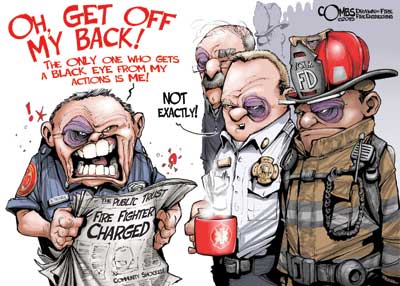In response to Sean Gray’s article “Controlling the Openings: Is This the Future of Ventilation?” (Fire Engineering, October 2014) and, in general, in response to certain fire departments’ application of the National Institute of Standards and Technology (NIST) fire studies, I believe many are applying the science without peer review and without considering the application of appropriate gallons per minute (gpm) coordinated with and just after ventilation and without further study that would address the use of positive-pressure ventilation (PPV)/positive-pressure attack (PPA), including PPV studies by NIST in 2010.
NIST has provided us with critical information that has proven what many have already applied for years: Put water on the fire. What we call “blitz” and others call “hitting hard from the yard,” “resetting the fire,” and so on, has proven to be beneficial time and again and has almost no downside when done correctly. NIST has confirmed that water doesn’t push fire; that the smoothbore nozzle is preferable over the fog nozzle; and that putting water on the fire, and even on explosive gases (smoke and heat), in almost all instances makes the environment safer for firefighters and civilians. This includes water from the exterior prior to entry but also includes water directed above and in front of advancing crews, cooling the gases above as we make entry. I believe numerable firefighter lives will be saved from extreme fire behavior (flashover, for example) when this becomes the norm in our culture.
NIST has also provided us with excellent science on ventilation. And that’s what it is: science, information we can use to better our understanding of fire behavior and growth. An issue, however, is that the current studies are only addressing natural ventilation. What is not being addressed is an appropriate coordinated flow path and adequate gpm at each juncture in the science and in its application.
As Gray attests, “The fire gets bigger if you provide a ventilation opening.” Yes, and we should never ventilate until we are prepared to enter with an appropriately charged handline just after we do so. This may be coordinated PPA, or it may be vertical ventilation. We now know that it is nearly impossible to completely ventilate the British thermal units (Btus) of nonlegacy (plastics and so on) fires using natural ventilation. What is not addressed is NIST’s own science, which demonstrated that PPV “created slightly lower gas temperatures in the fire room and significantly lowers gas temperatures in the adjacent corridor” as well as improves “visibility significantly.” (http://www.nist.gov/fire/ppv.cfm)
Regardless, we are not attempting to fully ventilate the Btus when we perform ventilation. We are attempting to make the atmosphere more tenable for the approaching handline-protected fire crews. To that end, ventilation-PPV and vertical-when performed in a coordinated fashion, has been successful, as any experienced firefighter will attest. Though we are feeding oxygen to the fire, the gases begin to move away from the compartment we are entering, and the fire becomes more visible and is safer to approach with a charged handline.
Some have recently begun attributing close calls and line-of-duty deaths to leaving the entrance door open and are developing guidelines dictating that the door be held closed on the handline. For instance, Gray attributes the extreme fire behavior that injured four firefighters to leaving the front door open when, in fact, he details the larger problem: They entered and then broke windows. In fact, in reviewing the after-action report, four windows and two sliding glass doors were opened while the firefighters were inside on the second floor. That is not coordinated. We don’t set up ventilation while firefighters are inside. There were also critical communication lapses on that fire. It is easy to attribute sudden extreme fire behavior to simply leaving the door open when, on any close call, the entire picture needs to be brought into focus and details such as a lack of coordinated ventilation, a lack of appropriate gpm, a communication lapse, or a lack of command are often overriding factors.
When we attempt to keep the fire in a ventilation-controlled state by underventilating and minimizing ventilation openings-for example, leaving the door shut-we may decrease visible burning, but we leave the area full of explosive products of combustion and in a ready state to explode into extreme fire behavior. We cannot guarantee control of the structure; therefore, on approach, anything can happen: A window can fail, someone can inadvertently open a door or window, or the small opening we left for our hoselines in the supposedly closed door can feed or draw those explosive products, and we’re then left in the sudden extreme fire behavior created by our underventilation.
The NIST science is absolutely critical and needs to be implemented when developing our tactics. We have to be cautious as we move forward and ensure we understand all aspects of the science and include our fireground experience when evolving our strategies and tactics. Coordinated ventilation still has a place in our offensive attacks today.
David Leonard
Captain
Austin (TX) Fire Department

Fire Engineering Archives


